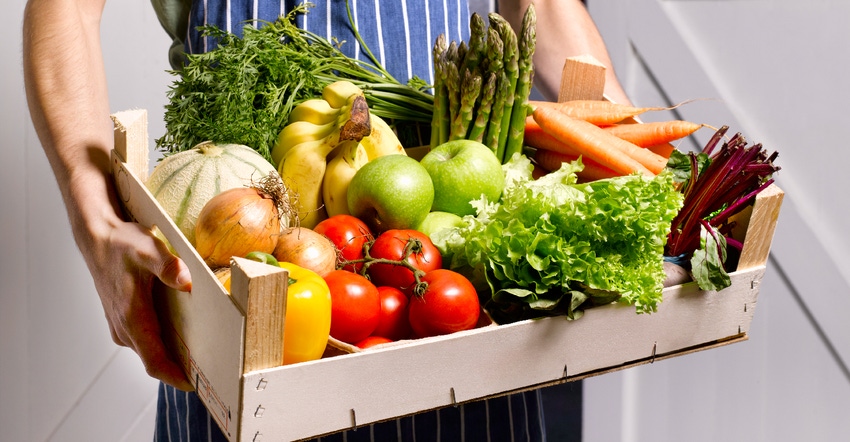
COVID-19 has been a basket case for everyone, but the basket may look different for any one grower, says Trey Malone, assistant professor in the Michigan State University Department of Agricultural, Food and Resource Economics.
The pandemic dramatically altered U.S. agricultural supply chains. Not only did each commodity experience unique consequences associated with substantial changes in consumer behavior, he says, but each supply chain’s ability to produce demanded items also was significantly affected by pandemic outbreaks and heightened trade uncertainty.
“Michigan is the second most diverse state in the country, and each commodity had the potential to be impacted differently,” says Malone, who recently authored a study on the different economic effects of COVID-19 with two other researchers, Steven Miller, director of the MSU Center for Economic Analysis; and K. Aleks Schaefer, assistant professor in the MSU Department of Agricultural, Food and Resource Economics.
Related: Complete coronavirus coverage
“Some smaller producers are having to deal with massive global shocks — demand, labor, transportation — and it might be different for all of them,” Malone adds. “Maybe if you were a U-pick strawberry operation this year, you probably did pretty well. Kroger might be considered a winner too, but if you’re in the standard, commercial agrifood system and an ag grower, there’s no winner unless you are counting ag farm payments.”
In total, the study reported that the 2020 farm-gate annualized output in Michigan would have reached more than $5.5 billion in the absence of COVID-19. Instead, it estimates farm-gate annualized output slipped to slightly over $4.5 billion dollars — $1 billion in damages representing an 18.6% decline.
The vegetable and dairy industries in Michigan experienced some of the largest percentage declines, with 27.3% and 25.2% drops, respectively, in farm-gate annualized output, the study says.
“In terms of dollar value, our analysis suggests that dairy and row crop producers experienced the largest total decline, losing $464 million and $325 million in total annualized output, respectively,” Malone says. “Results from our input-output analysis suggest the Michigan economy experienced a decline of almost $2.2 billion of primary and secondary sales due to pandemic effects on agricultural producers.”
Consumer buying shift
While the study looked at Michigan specifically, researcher Miller says the findings are largely consistent with national estimates provided by the Food and Agricultural Policy Research Institute.
The losses were mostly attributed to the consumer shift from buying food away from home (FAFH) to food at home (FAH). “The consumer shift from 50% of food purchase dollars going to FAFH to 32% in the course of two months was surprising,” Miller says.
The extent of the damage to growers depends on the commodity, Malone adds. “Obviously, when schools shut down, that created havoc with dairy and its delivery system," he says. "Blueberry demand in grocery stores maintained, but for aquaculture, 75% of expenditures are at the restaurant level.
"But, there’s also farmers experimenting with stuff like commercially grown morel mushrooms to sell to high-end restaurants. That demand right now is basically zero. It has really messed with their bottom line and viability going forward. These food production and delivery systems made huge investments assuming they were selling in a certain direction, but basically overnight, we asked them to rethink the direction they are selling.”
The food and agriculture supply chains are complicated, with many interlinking. “It’s not a clear-cut system that gives us our plate of food,” Malone says. “These systems work in unison to produce an incredibly cheap meal. But, it’s not nearly as simple as some people thought, and consumers are recognizing that now more than ever — that’s a positive thing for agriculture.”
Farm payments have been huge in offsetting the entire wrath of the pandemic, Malone says. However, there is uncertainty of what those farm payments will look like going forward, and the uncertainty of what the next farm bill might look like.
“There are a lot of questions up in the air, but what we can measure is what the impacts have been thus far,” Malone says.
Read the entire study at canr.msu.edu.
Read more about:
Covid 19About the Author(s)
You May Also Like






